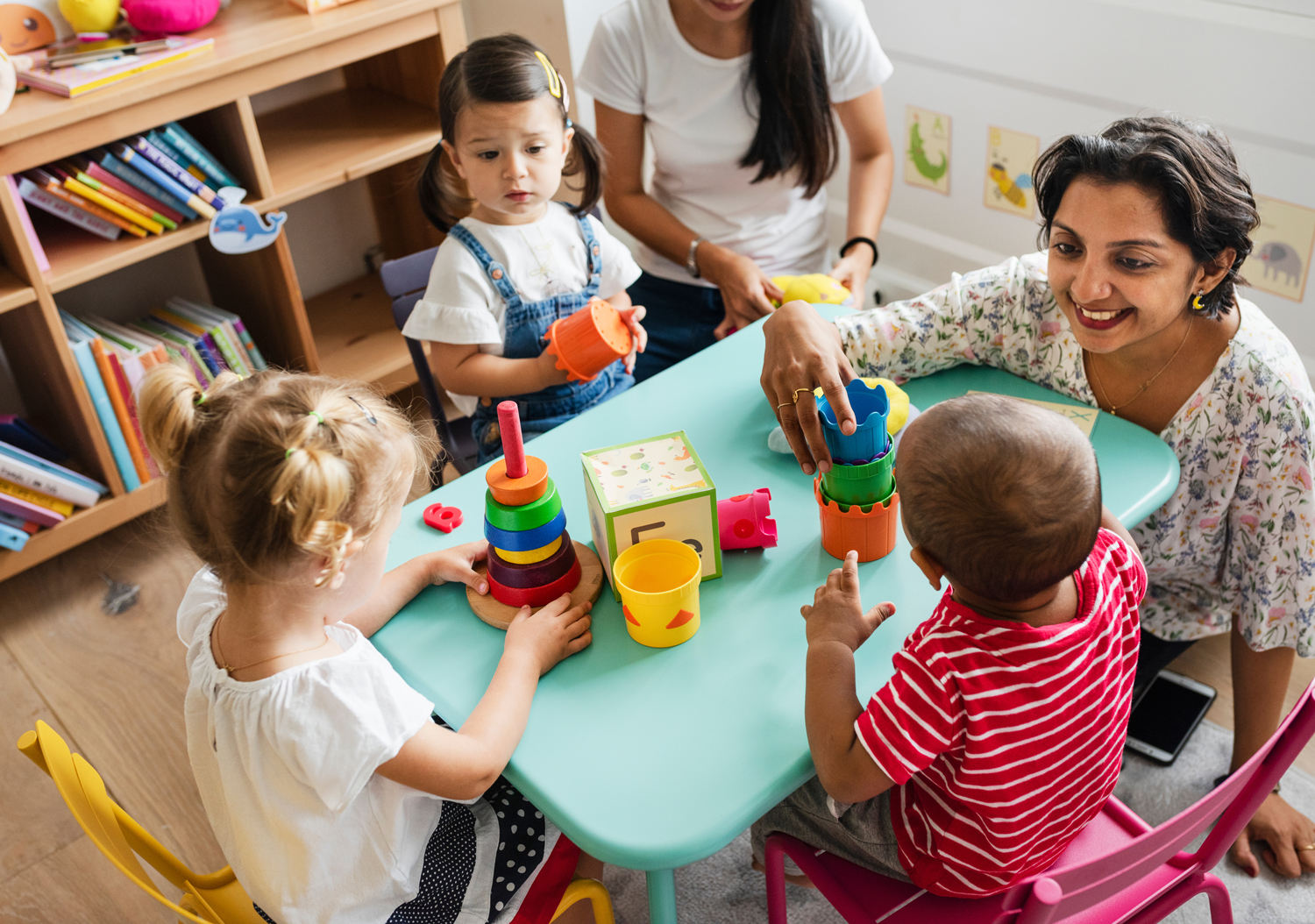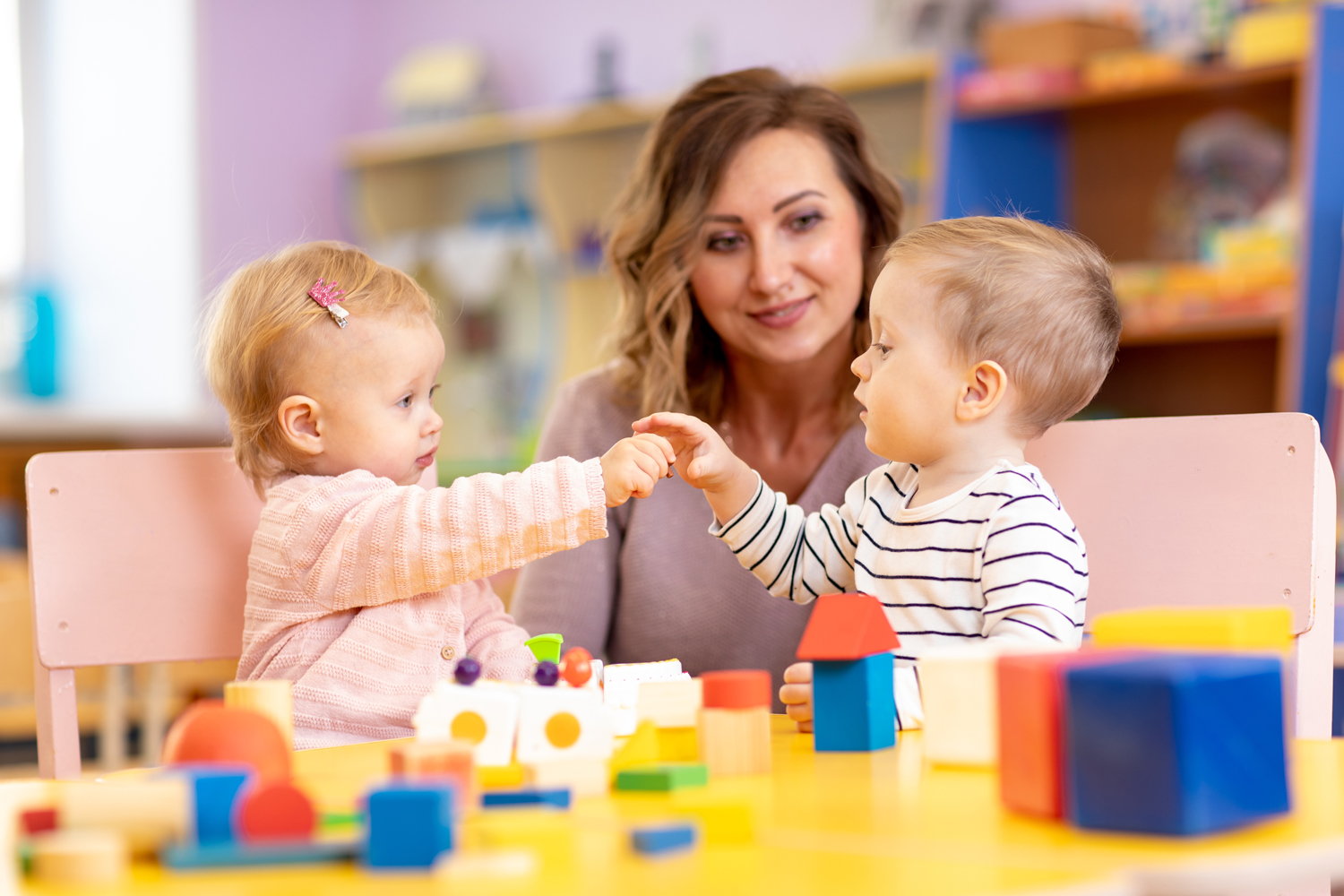What Stands in the Way of Successful Peer Play?

Peer play in the classroom is about so much more than having fun. When 3-5 year old's interact with their peers, they learn and practice essential language, social and cognitive skills that prepare them for school success.
But promoting peer play isn’t always easy. We asked professionals who work in early childhood settings what common challenges they face when trying to encourage children to interact. Here are the top concerns they expressed, along with some thoughts from our Director of Early Childhood Education, Helen Livshits.
1. Not enough unstructured time to allow for organic interactions. There’s an expectation that time should be spent in structured ways to focus on helping children achieve specific goals.
Helen’s thoughts:
Yes, in preschool settings, children often spend time engaged in structured activities. They also spend time transitioning between activities and participating in routines like mealtime. At other times, children may be involved in free play, including sensory activities like water play, that tend to be more open-ended. So how do we make the most of structured activities and other moments throughout the day?
Regardless of the context, peer interaction should be enjoyable for each child involved. So, if you have a child who is particularly active, a structured game like tag may be worth a try! Less structured activities like sand and playdough encourage children to gather and interact. If a structured craft has been set up, perhaps a more isolated child can have a special role like handing out googly eyes to their peers. Transitions can also be a wonderful time to promote peer interaction. Peers can be strategically paired or grouped to support one another with anything from tidying up toys, to setting up for snack, to changing from indoor to outdoor shoes. You can look for opportunities throughout the day to help peers notice each other and begin to interact in a way that is both natural and fun!
2. Some children seem to want to join in, but they don’t know how. They may watch from afar or do something inappropriate, like take a toy from another child.
Helen’s thoughts:
Watching from afar is a great first step, as this suggests that the child is interested in what their peers are doing. Addressing the child by name and inviting them to join may be all it takes to spark peer play. It can also be helpful to give the child a prop. For example, if a child is watching a group of peers play grocery store, offer the child a shopping cart and suggest they go in and buy something!
3. Children’s behaviours can interfere with peer play (for example, children may be too rough or knock down other children’s creations).

Helen’s thoughts:
Here is where you can be strategic. Use your knowledge of each child’s unique interests, preferences and personality to set up play scenarios that are more likely to be successful. For example, some children may be overwhelmed by groups. These children may do better if only one other child with similar interests is invited to join them in play. Know that even with the best planning, peer interaction will not always go smoothly. Some children will need you to stay to play and support them with their peers. Like all skills, children benefit from lots of opportunities to practice!
4. Some children seem to just prefer to play on their own or alongside other kids without interacting.
Helen’s thoughts:
Not all children appear to show an interest in their peers. It is important that we never force this interest – but it is equally important that we do our part to create the best possible environment for peer interaction to flourish in a way that feels natural and fun!
Peer interaction can start small. For example, a child who may not gravitate towards their peers during free play may become more interactive when talking about a favourite topic or engaged in a preferred activity. Starting with just one peer may be less demanding than a group. Non-verbal peer interaction may also be less demanding – for example, if a reluctant child is in charge of distributing playdough, there are no demands for them to talk, but plenty of opportunities to be around others and interact with them.
Interested in more tools and tips to promote peer play?
If you work directly with children in preschool settings or you train or consult to educators, you may be interested in our new e-Seminar, Boosting Peer Play: How to Support Interactions in Early Childhood Settings. This recorded e-learning session shows you how to identify children’s level of social interaction and offers a template Action Plan for deciding on next steps for each child to maximize their peer interaction opportunities.
Similar articles by tag:
Classroom | Boosting Peer Play | Peer Interaction | Learning Language and Loving It
